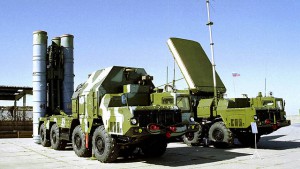The S-300 missiles deal between Russia and Iran is today more of a symbolic rather than an actual threat. While Israel was waging a campaign against the Iranian nuclear program, this deal not only symbolized the breaking of the embargo on Iran, but also, primarily, that Iran will be able to build fortifications to defend against a potential Israeli air strike on its nuclear weapons facilities.
Today we are in a different position. The global embargo against Iran no longer exists, and it’s safe to assume that Israel, for all intents and purposes, has conceded attacking Iran in the near future.
From Israel’s perspective, as long as these missiles remain on Iranian soil and don’t reach Syria or Lebanon, the weapons deal only has political implications. Russia is attempting to defy NATO and the West, while Iran has garnered another international achievement after signing the nuclear deal.
As of yet, the Russian Foreign Ministry has not approved the deal, which was originally signed in 2007 and again in 2015. The Iranian reports claiming that the deal has been implemented do not mean that it actually has been. Six months ago, it was reported that the agreement had been implemented, but the Russians stopped the delivery of the missiles at the last second because the Iranians did not transfer the required payment.
It would not be surprising if Monday’s one-sided Iranian report (which included a photo of a truck carrying something covered) is a part of the bargaining process between the two states.
The original deal included four batteries of S-300 missiles. But after Iran decided to pursue Russia in justice to receive financial compensation for delaying the implementation of the deal, the Russians agreed to increase the number of batteries that will be transferred to Iran. The exact number is still unknown.
If Israel nevertheless acts against Iran in the future, it will do so in the framework of an international coalition. There are other technological solutions to stand against S-300 missiles coming from all over the world. Greece, which acquired S-300 in the distant past, is used as a training grounds for NATO to combating these missiles, while Israel is due to receive stealth F-35 jets by the end of this year.
The existence of S-300 missiles on the border of Israel, on Syrian or Lebanese soil, will put every aircraft in Israel’s skies at risk. This is a serious military threat.
Incidentally, Russia already challenged Israel with anti-aircraft missiles such as SA-5 missiles, which it sent to Syria in the early 1980s. It was not the end of the world, and Israel learned to live in the missiles’ shadow and continued to operate in Lebanon and Syria whenever it deemed it necessary.
It seems that the Russians will indeed honor their deal with the Iranians and supply them with the missiles Moscow no longer produces S-300 missiles; its army now possesses the more advanced S-400 missiles.
The S-300 missile agreement is the first sign of the world opening its doors to selling advanced weapons to Iran, which will reportedly invest $20 billion in rehabilitating its army. The Russians alone already sell the Iranians cargo planes, fighter planes, training planes, command and control planes and P-800 Oniks anti-ship missiles.
The Sunni coalition, led by Saudi Arabia, is also concerned about this development. It is in an ongoing confrontation with Iran and is trying to undo Shiite influence in the region. To that end, it is undertaking $60 billion of arms deals with countries that are not necessarily friendly with Israel.
Israel cannot ignore this regional arms race and therefore needs to sign—and the sooner the better—the military aid deal with the United States.
ynetnews.com



